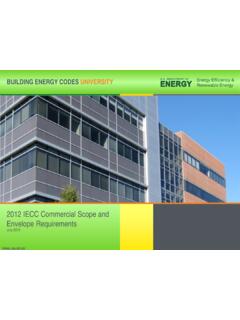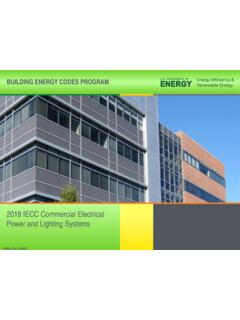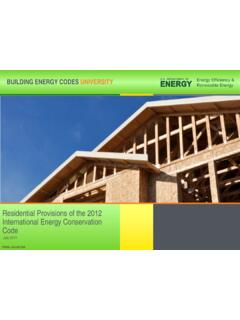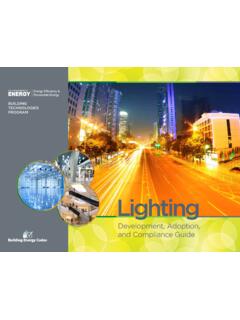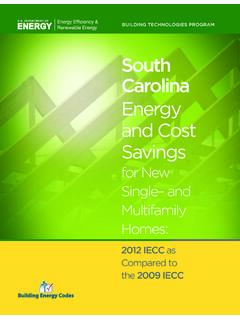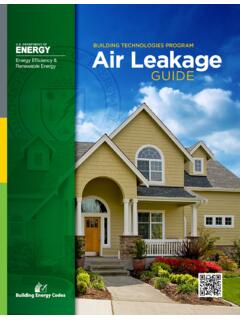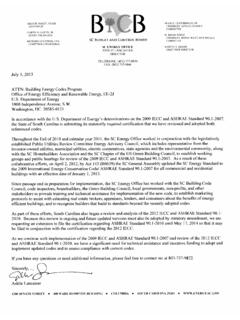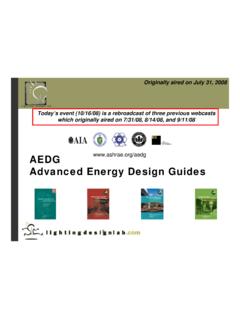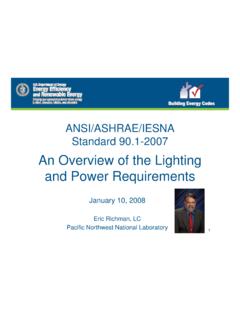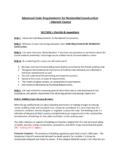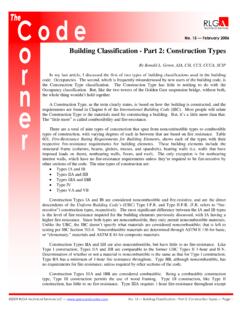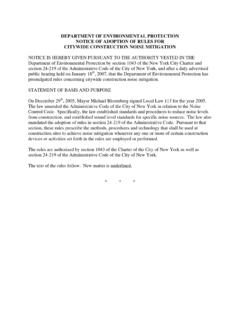Transcription of Duct Testing in New Residential Construction - Code Notes
1 Duct Testing in New Residential Construction - code Notes [2009 IECC]BackgroundMany studies have shown that visual inspection of duct seals in residences is not enough. code now requires apressure test. Pressure Testing ducts as required by the 2009 IECC is far superior to visual inspection and willdefinitively confirm that duct leakage is kept to a low level. Building Energy Codes Program experts estimate thatpressure Testing ducts in new Residential Construction will reduce energy consumption in new homes by up to 10% onaverage and potentially much more in some of the 2009 IECC states that the sealing of ducts must be verified by a duct pressure test. This testinvolves using a fan to force air into the duct system and measuring how much air leaks out through cracks and holes(the registers are taped closed for the test).
2 A duct pressure test is not required if the air handler and all ducts arelocated inside the building thermal envelope. The requirements for how to seal ducts are given in Section ofthe International Residential code , and apply regardless of the location of the code allows considerable flexibility in the required test. It can be conducted by anyone, including the installer or athird party. It can be done either after rough-in of the ducts or at the completion of Construction ( , after drywall hasbeen installed and finished). There are separate requirements for Testing at rough-in, depending on whether the airhandler has been installed at the time of the test. The post- Construction test can measure either the "total leakage" ofthe ducts or the "leakage to outdoors" (the fraction of the total that leaks outside the conditioned space).
3 The allowable leakage rates are expressed in terms of airflow (cubic feet per minute or CFM) per 100 ft of conditionedfloor area, when duct registers or boots are taped/sealed and the duct system is pressurized to 25 Pascals ( ). Maximum leakage rates for the various Testing options are as follows: Testing OptionMaximum CFM per 100 ft @25 PascalsAt rough-in, air handler not installed4At rough-in, air handler installed6 Post- Construction , leakage to outdoors8 Post- Construction , total leakage12 The drawbacks of rough-in Testing include less accuracy as leaks in the boot assembly cannot be fully measuredbecause drywall is not yet installed. Also, it is only possible to measure total leakage whereas leakage specifically tothe outdoors can be measured when the house is ReviewNo action is required at plan InspectionThe builder shall provide data confirming that leakage rates are equal to or less than the rates specified in of the IECC 2009.
4 Testing is not required if all ducts and the air handler are inside the building thermalenvelope. code officials shall perform a visual inspection of ducts to confirm proper sealing in all 1 of 2 Citations*IECC 2009, SealingRequires that all ducts, air handlers, filter boxes, and building cavities used as ducts be and seams shall comply with Section of the International Residential code . Ducttightness shall be verified by either a postconstruction test or rough-in InformationFor more information, please see information on why duct Testing is important, see PG&E#s Tech Brief information on efficient duct systems see the ENERGY STAR write up ICC Reference and link*Copyright, 2009,InternationalCodeCouncil, Inc.
5 Falls Church, Virginia. All rights Energy Conservation 2009-08-21 11:34 2 of 2
